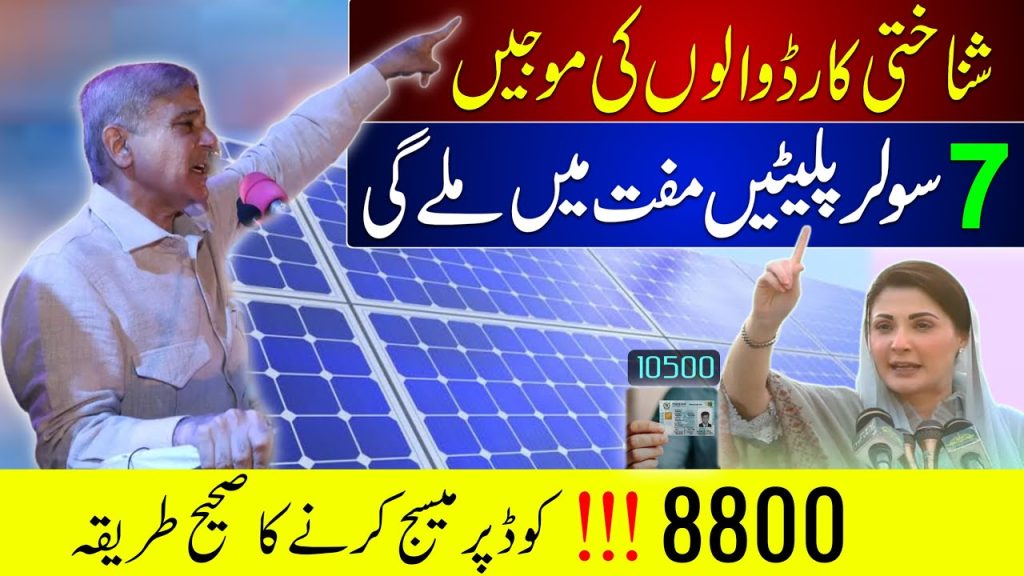The term “free solar panels” often brings to mind various arrangements like solar leases, power purchase agreements (PPAs), or government initiatives designed for low-income households. In this article, we’ll focus on the third option: how you can acquire solar panels through government programs in 2024.
Numerous Federal, State, and Local government solar incentives can significantly reduce the expense of installing solar systems, making it possible for homeowners to benefit financially from switching to solar energy.
Eager to learn about available solar incentive programs and how you can potentially obtain solar panels through government assistance? Continue reading to explore how these programs can save you money on your solar transition.
What Do “Free Solar Panels” Really Mean?
The concept of “free solar panels” typically refers to solar systems offered with no initial out-of-pocket costs for homeowners. Instead of bearing the expense of installation and equipment themselves, homeowners can benefit from various programs and incentives that cover these costs. However, it’s important to comprehend the different types of programs and what “free” entails in this context.
Government Incentives and Rebates
To encourage the adoption of solar energy, governments provide a range of incentives and rebates. These financial aids can dramatically reduce or even eliminate the costs associated with solar panel installations. Common incentives include federal tax credits, state rebates, and local grants.

Solar Panel Leasing Programs
Solar panel leasing involves a company installing solar panels on your property while you lease the system. You typically pay a fixed monthly fee, often lower than your previous electricity bill. In this arrangement, the leasing company retains ownership of the panels and is responsible for their maintenance and repair.
Power Purchase Agreements (PPAs)
A Power Purchase Agreement (PPA) allows a solar provider to install panels on your roof, and you agree to buy the electricity generated at a set rate. This rate is generally lower than what you would pay your utility company, offering immediate savings without the upfront costs associated with solar panel installation.
How to Obtain Solar Panels Through Government Programs?
Although many aspire to get “free” solar panels from government programs, it’s not entirely straightforward. There isn’t a program that provides solar panels entirely for free, but several incentives and programs can substantially lower the cost of installing solar systems. Here are some prominent government incentives currently available:
Solar Investment Tax Credit (ITC)
The Solar Investment Tax Credit (ITC) allows homeowners to deduct 30% of their solar installation costs from their federal taxes. This credit is available for systems that are installed and operational before December 31, 2032.
Solar Renewable Energy Credits (SRECs)
Solar Renewable Energy Credits (SRECs) are earned for every megawatt-hour (MWh) of electricity your solar system generates. These credits can be sold in states with solar carve-outs, providing an additional revenue stream.
Performance-Based Incentives (PBIs)
Performance-Based Incentives (PBIs) provide financial rewards based on the actual electricity output of your solar system. Payments vary by state and utility company, offering compensation for the energy produced by your system.
State Tax Credits
Several states offer additional tax credits that can be applied against your state tax liability, further reducing the net cost of installing solar panels.
Net Metering
Net metering allows you to sell any excess electricity generated by your solar panels back to the grid, earning credits on your utility bill. This can help offset your energy consumption costs even more.
By leveraging these government incentives, you can significantly reduce the cost of acquiring solar panels. However, each incentive has its own eligibility criteria and application process, so thorough research is essential to ensure you qualify for the programs and understand their requirements.
Why Did the U.S. Government Introduce Solar Incentive Programs?
The rise in popularity of solar energy can be attributed to various factors, including the environmental and economic advantages it offers. But what motivated the U.S. government to establish solar incentive programs? Here are the key objectives:
- Cost Recovery for System Owners: Solar incentive programs are designed to help owners recoup their system costs within a reasonable timeframe. For commercial entities, this period is typically five years, while residential customers usually have ten years. This approach reduces financial risk and encourages more people to consider solar energy.
- Encouraging Efficient Solar Designs: Performance-Based Incentives (PBIs) promote the design of high-efficiency solar systems. By rewarding peak energy production, these incentives encourage owners to proactively manage and maintain their solar systems to maximize performance.
- Supporting the Local Solar Industry: Government subsidies and tax incentives make solar energy more accessible, increasing sales and fostering competition in local markets. This competition can drive down installation costs further, supporting a robust local solar industry.
The U.S. government’s solar incentive programs offer significant benefits, making the transition to solar energy more accessible and financially advantageous. The ultimate goal is to support a greener, more sustainable energy future.
Finding Information About Solar Panel Incentives and Rebates
While the idea of cutting energy bills with solar power is appealing, navigating the various incentives and rebates can be complex. Fortunately, there are reliable sources for up-to-date information on solar panel incentives:
- Database of State Incentives for Renewables & Efficiency (DSIRE): This comprehensive resource provides a detailed list of solar incentives and policies by state. It is regularly updated and offers guidance on each policy and incentive.
- Solar Energy Industry Association (SEIA) and SolarReviews: SEIA’s partner, SolarReviews, features a dedicated resource page for solar incentives. This page includes state-by-state updates, breaking down incentives, tax credits, and other financing options.
- Consulting with Your Installer: Speaking directly with a solar installer can provide the most current information on local incentives and how they apply to your specific situation. They can also assist with understanding the application process for these incentives.
Conclusion
While the notion of acquiring free solar panels from the government is somewhat misleading, obtaining high-quality solar panels at a reduced cost is certainly achievable through various incentives and programs. Renogy, a leading U.S. solar company with nearly 15 years of experience, offers a range of solar panels that can meet your needs efficiently and affordably.
By understanding and utilizing the available incentives, you can make a more cost-effective transition to solar energy and contribute to a sustainable future.




